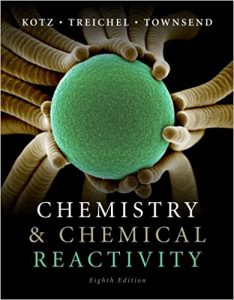 Copper’s inherent ability to kill bacteria will now be taught in America’s college and university curriculums.
Copper’s inherent ability to kill bacteria will now be taught in America’s college and university curriculums.
A new chapter in the Chemistry & Chemical Reactivity textbook, published by Cengage Learning, features the results of the Department of Defense-funded, U.S. clinical trial investigating the antimicrobial properties of metallic, copper alloy surfaces like brass and bronze in the hospital environment.
The chapter, titled ‘The Chemistry of the Transition Elements’, details how installing surfaces made from these age-old metals is a ‘simple and low cost way’ to reduce bacteria that cause healthcare-associated infections in hospitals.
Quoted in the book is Dr. Michael Schmidt, Professor and Vice Chairman of Microbiology and Immunology at the Medical University of South Carolina, who was one of the lead researchers in the clinical trial and has been an advocate for the use of antimicrobial copper surfaces in healthcare facilities.
‘We have known for centuries that copper has intrinsic, antimicrobial properties and that it was used by our ancestors to combat disease, sickness and other ailments,’ says Schmidt.
Previous editions are widely used in colleges, universities, and to a lesser extent high school advanced placement courses.
‘In preparing this edition, we tried to bring in important new developments in science such as the reference to antimicrobial properties of copper,’ said Paul M. Treichel, a co-author of the textbook, and Emeritus Professor of Chemistry at the University of Wisconsin-Madison.
Chemistry & Chemical Reactivity can be purchased on Amazon.com.